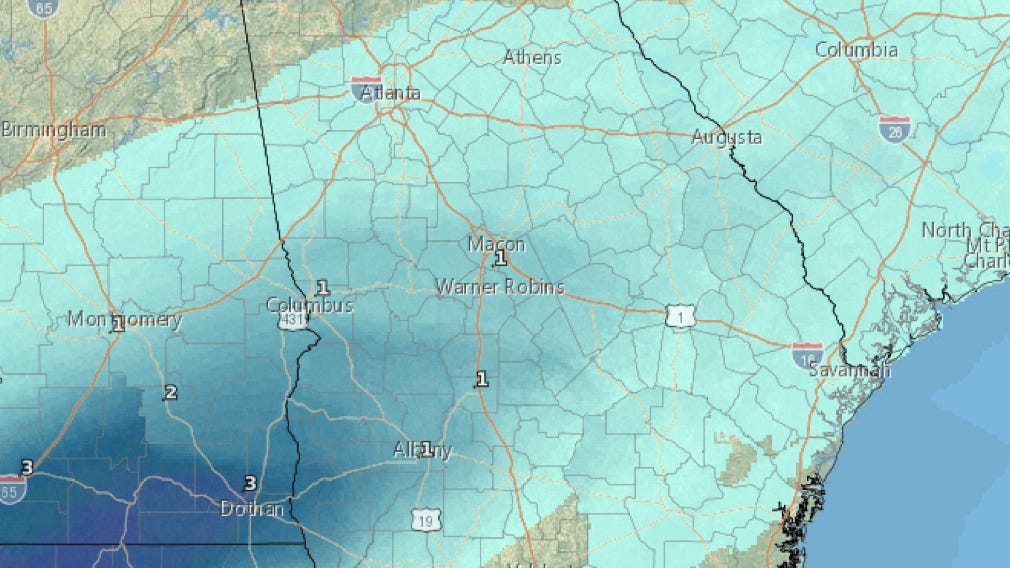Winter Weather Timeline: Planning And Preparation Guide

Table of Contents
Early Fall Preparation (September-October): Laying the Foundation for Winter Safety
Early preparation is key to a smooth and safe winter season. By taking proactive steps in September and October, you'll significantly reduce stress and potential hazards when the snow starts to fly. This section focuses on crucial home and vehicle winterization tasks.
Home Winterization: Protecting Your Haven from the Cold
Your home is your sanctuary, and protecting it from winter's harsh conditions is paramount. A well-winterized home ensures comfort and safety throughout the season.
- Inspect and clean gutters and downspouts: Clogged gutters can lead to ice dams, causing water damage to your roof and ceilings. Clear them of leaves and debris to ensure proper water flow.
- Check and repair cracks or leaks in windows and doors: Seal any gaps or cracks to prevent drafts and heat loss. Use caulk or weather stripping to improve insulation and energy efficiency.
- Insulate pipes vulnerable to freezing: Pipes in unheated areas, like basements or crawl spaces, are susceptible to freezing. Insulate them with pipe sleeves or heat tape to prevent costly burst pipes.
- Ensure your furnace is serviced and functioning properly: Schedule a professional furnace inspection and maintenance to ensure optimal performance and safety throughout the winter. A properly functioning heating system is vital during cold snaps and severe winter weather events.
- Stock up on essential home supplies: Gather firewood (if applicable), extra blankets, and other comfort items to ensure you stay warm and comfortable during power outages or extreme cold.
Vehicle Preparation: Ensuring Safe Winter Travel
Your vehicle is your lifeline during winter storms. Proper preparation ensures safe and reliable transportation, even in challenging conditions.
- Check your antifreeze levels and replace if necessary: Antifreeze prevents your engine from freezing in sub-zero temperatures. Check the levels and replace if needed, ensuring your car can withstand severe winter weather.
- Inspect your tires and ensure adequate tread depth and proper inflation: Sufficient tread depth is essential for traction on snow and ice. Consider investing in winter tires for optimal grip in areas with heavy snowfall. Properly inflated tires improve handling and fuel efficiency.
- Stock your vehicle with an emergency kit: Prepare a kit containing jumper cables, blankets, a flashlight, a first-aid kit, non-perishable food, water, and other essential supplies. This kit is crucial for dealing with unexpected delays or emergencies during a winter storm.
Late Fall Preparation (November): Finalizing Your Winter Weather Plan
November is the ideal time to finalize your winter weather plan and stock up on essential supplies. This ensures you're fully prepared for any eventuality.
Develop a Winter Weather Plan: Preparing for the Unexpected
A well-defined plan minimizes the impact of winter storms and ensures the safety of your family.
- Identify potential hazards around your home: Assess your property for potential risks, such as overhanging branches, icy patches, or areas prone to flooding.
- Plan escape routes in case of emergencies: Identify multiple escape routes from your home in case of a blizzard or other emergency.
- Establish a communication plan with family and neighbors: Determine how you will communicate with family members and neighbors during a power outage or severe weather event.
- Determine a safe location to shelter in case of power outages: Identify a warm and safe place to shelter in case of a prolonged power outage. This could be a friend's or family member's home or a designated public shelter.
Stock Up on Essentials: Building Your Winter Emergency Supplies
Having a sufficient supply of essential items on hand is crucial during extended power outages or winter storms.
- Non-perishable food items: Stock up on enough non-perishable food to last for at least several days, ideally a week or more.
- Bottled water: Store one gallon of water per person per day for drinking and sanitation.
- Flashlights and extra batteries: Ensure you have multiple flashlights and plenty of extra batteries.
- A battery-powered radio: A battery-powered radio is essential for receiving emergency alerts and weather updates during a power outage.
- First-aid kit and medications: Ensure your first-aid kit is fully stocked and you have enough prescription medications to last for several days.
Winter Storm Watch/Warning (Throughout Winter): Reacting to Winter Weather Alerts
Staying informed and taking timely action is crucial when a winter storm watch or warning is issued.
Monitoring Weather Forecasts: Staying Informed
Reliable and up-to-date weather information is your best defense against winter storms.
- Stay updated on weather alerts and warnings: Monitor weather reports from reliable sources, such as the National Weather Service.
- Download weather apps: Use weather apps to receive real-time updates and alerts directly to your phone.
Taking Action: Protecting Your Home and Family
When a winter storm warning is issued, it’s time to implement your preparedness plan.
- Bring in outdoor plants and pets: Protect vulnerable plants and pets from the cold and harsh weather conditions.
- Charge all electronic devices: Ensure all phones, laptops, and other devices are fully charged.
- Fill your vehicle's gas tank: A full gas tank helps prevent fuel lines from freezing and ensures you can travel safely if needed.
- Secure loose items outdoors: Bring in or secure any outdoor items that could be damaged by wind or snow.
- Prepare for potential power outages: Review your plan for dealing with power outages, including using alternative heating sources safely.
Post-Winter Storm (Throughout Winter): Recovery and Safety
Even after a winter storm passes, there are still safety considerations and recovery efforts to undertake.
Safety Precautions: Navigating Post-Storm Conditions
Post-storm conditions can still be hazardous. Exercise caution.
- Avoid driving unless absolutely necessary: Road conditions may be treacherous, even after the storm has passed.
- Be cautious of downed power lines: Never approach or touch downed power lines. Report them to the appropriate authorities immediately.
- Check on elderly neighbors and those who may need assistance: Check in on vulnerable individuals who may require assistance.
- Report any damage to local authorities: Report any damage to your property or infrastructure to local authorities.
Recovery and Cleanup: Restoring Order
Getting back to normal after a winter storm requires careful planning.
- Clear snow and ice from walkways and driveways: Clear walkways and driveways to ensure safe passage.
- Check for damage to your home and property: Carefully inspect your home and property for any damage caused by the storm.
- Contact your insurance company if needed: Contact your insurance company to report any damage and begin the claims process.
Conclusion: Mastering Your Winter Weather Timeline
Creating a detailed winter weather timeline and implementing a comprehensive preparation plan is crucial for navigating the challenges of winter weather. By following these steps and staying informed, you can significantly reduce risks, ensure your safety, and minimize disruptions during winter storms. Don't wait until the first snowflake falls – start planning your winter weather preparedness strategy today! Remember to regularly review and update your winter weather timeline and emergency plan for optimal effectiveness. Proactive snow preparedness and ice storm preparation are vital components of a successful winter safety plan.

Featured Posts
-
 Trump Presidency News For April 23 2025
Apr 25, 2025
Trump Presidency News For April 23 2025
Apr 25, 2025 -
 Bayerns Comeback Victory 11 Point Bundesliga Lead
Apr 25, 2025
Bayerns Comeback Victory 11 Point Bundesliga Lead
Apr 25, 2025 -
 Nfl Combine Ashton Jeanty Set For Meeting With Chicago Bears
Apr 25, 2025
Nfl Combine Ashton Jeanty Set For Meeting With Chicago Bears
Apr 25, 2025 -
 2025 Anzac Day Guernsey Unveiled A New Design Revealed
Apr 25, 2025
2025 Anzac Day Guernsey Unveiled A New Design Revealed
Apr 25, 2025 -
 Linda Evangelista On Cool Sculpting The Aftermath And Her Journey Back
Apr 25, 2025
Linda Evangelista On Cool Sculpting The Aftermath And Her Journey Back
Apr 25, 2025
Latest Posts
-
 Newsom Faces Criticism For Toxic Democrats Comment
Apr 26, 2025
Newsom Faces Criticism For Toxic Democrats Comment
Apr 26, 2025 -
 Gavin Newsoms Toxic Democrat Remark A Political Backlash
Apr 26, 2025
Gavin Newsoms Toxic Democrat Remark A Political Backlash
Apr 26, 2025
